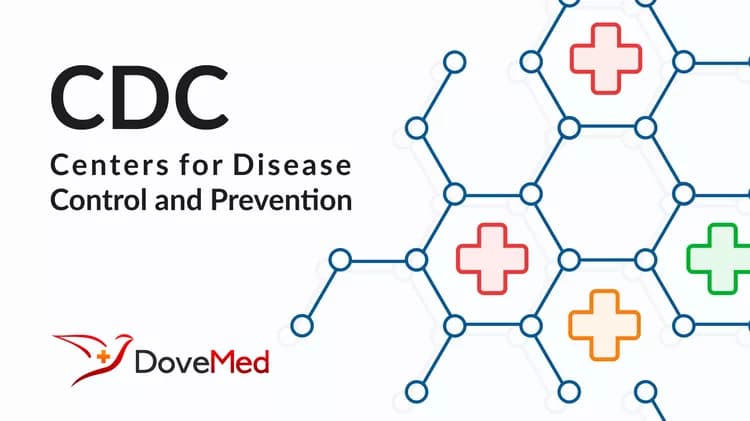
Syphilis among infants down more than half in three years
Syphilis among infants down more than half in three years
The syphilis rate among infants in 2000 declined by 51 percent since 1997, the year before the Centers for Disease Control and Prevention (CDC) launched a national campaign to eliminate the disease in the United States. In 2000, only 529 cases of congenital syphilis (CS) (13.4 cases per 100,000 live births) were reported in the United States, compared to 1,077 cases, (27.8 cases per 100,000 live births) in 1997. These data are being published in the July 13 issue of CDC’s Morbidity and Mortality Weekly Report (MMWR).
CDC also released data today indicating that primary and secondary syphilis rates among women of reproductive age – age 15 to 44 years – have dropped dramatically, from six cases per 100,000 women in 1997 (3,590 cases) to 3.7 cases per 100,000 women in 2000 (2,219 cases), a decline of 38 percent. Rates of CS closely follow trends in primary and secondary syphilis in women, as infants become infected from their mothers during pregnancy or delivery.
"With this decline in congenital syphilis, we have substantially improved infant health in the United States," said CDC Director Jeffrey P. Koplan, M.D., M.P.H. "Infected mothers who are not treated could have infants with syphilis who are neurologically impaired, have seizures or die during or after birth."
Untreated syphilis during pregnancy can result in infant death in up to 40 percent of cases.
"We can eliminate congenital syphilis from the United States by screening pregnant women for syphilis, and treating them with a single-dose of penicillin, an inexpensive, widely available antibiotic that is effective and safe for both mother and child," said Helene D. Gayle, M.D., M.P.H, Director of CDC’s Center for HIV, STD and TB Prevention.
The overall declines may be attributed to syphilis elimination programs initiated in recent years by CDC in collaboration with state and local partners. In 1998, the CDC initiated a national effort to eliminate syphilis in the United States, with a strong focus on addressing the high rates of syphilis and CS in minority communities.
Syphilis elimination efforts include enhanced surveillance programs to track the disease and target interventions, increased access to clinical care for people with syphilis, and community support to address social issues contributing to the persistence of the disease, including the need for education among health care providers about preventing CS.
"Access to and utilization of comprehensive prenatal care are the keys to early detection and treatment of congenital syphilis, and its impact on the health of infants," said George W. Counts, MD, director of CDC’s syphilis elimination program.
Counts noted that efforts to increase and evaluate physicians’ adherence to screening and treatment guidelines are also needed to eliminate CS.
CDC recommends that health care providers test all women for syphilis during the early stages of pregnancy. In areas where syphilis prevalence is high and for pregnant women at high risk, CDC recommends that providers test their patients early during pregnancy and twice in the third trimester, including once at delivery. Because stillborn delivery can be due to syphilis infection, all women who deliver a stillborn infant after 20 weeks of gestation should also be tested for syphilis and treated if infected.
The new data indicate that despite signs of decline overall and in most racial/ethnic groups (with the exception of American Indians/Alaska Natives), African Americans continue to be disproportionately affected by syphilis. In 2000, reported rates of CS were more than 32 times higher for African Americans than for whites. From 1997 to 2000, congenital syphilis rates declined 59.7 percent for African Americans, 58.3 percent for whites, 32.5 percent for Hispanics, and 29.8 percent for Asian/Pacific Islanders. American Indians/Alaska Natives experienced a slight increase (one case).
In 2000, the congenital syphilis rates were 49.3 cases per 100,000 live births for African Americans, 22.6 cases per 100,000 live births for Hispanics, 13.2 cases per 100,000 live births for American Indians/Alaska Natives, 5.9 cases per 100,000 live births for Asian/Pacific Islanders and 1.5 cases per 100,000 live births for whites.
While race and ethnicity themselves are not risk factors for syphilis and other STDs, many important factors contribute to higher rates of STDs among minorities, including living in resource-poor communities without access to quality health care services.
Cases were reported from 155 counties, or 5 percent of total counties in the U.S. The highest rates were in the South.
CDC protects people's health and safety by preventing and controlling diseases and injuries; enhances health decisions by providing credible information on critical health issues; and promotes healthy living through strong partnerships with local, national and international organizations.
Related Articles
Test Your Knowledge
Asked by users
Related Centers
Related Specialties
Related Physicians
Related Procedures
Related Resources
Join DoveHubs
and connect with fellow professionals

0 Comments
Please log in to post a comment.